The Plants of Ascot Hills

Ascot Hills is an absolute gem in the Los Angeles Park system. In addition to it's trails and majestic views, this park is a great example of successful California Native planting. As water conservation becomes ever more important in Southern California it is good to see examples of a natural landscape in an urban setting that is just minutes away from Downtown Los Angeles.
Here are some native plants that I have identified in the Park, most of them suitable to a water-wise garden:
Alnus rhombifolia (White Alder)
White Alder is a deciduous tree normally found in moist canyons. Ascot Hills has a small stream that supports riparian flora, fed by overflow from a nearby reservoir.
This tree can stand in water and still survive. This makes it useful for planting in wet spots where nothing else grows.
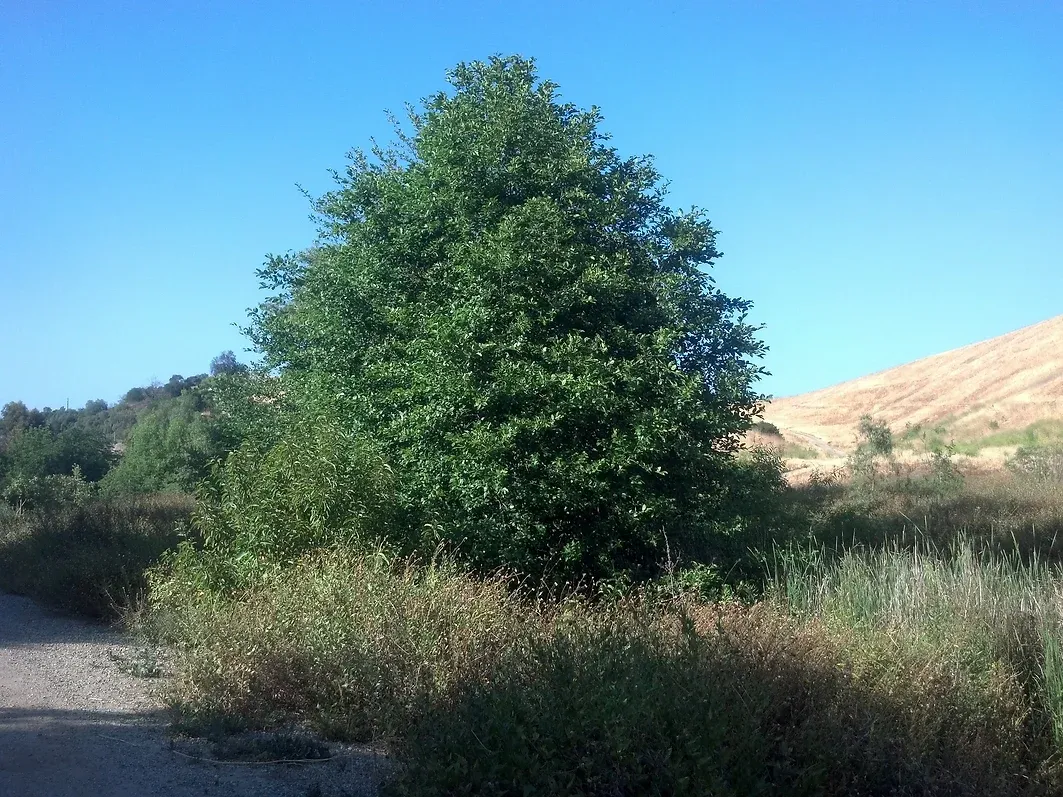
Arbutus marina (Marine Strawberry Tree)
Arbutus marina is technically not a California native but is a hybrid of the native Pacific Madrone (Arbutus menziessi) and the old world Mediterranean native Arbutus unedo.
Nonetheless, this evergreen tree is well suited to the aesthetics of a California native plant garden. This tree has a high tolerance for drought, and the bark provides some winter color. The bark is similar to Manzanita, peeling and turning red as it ages.
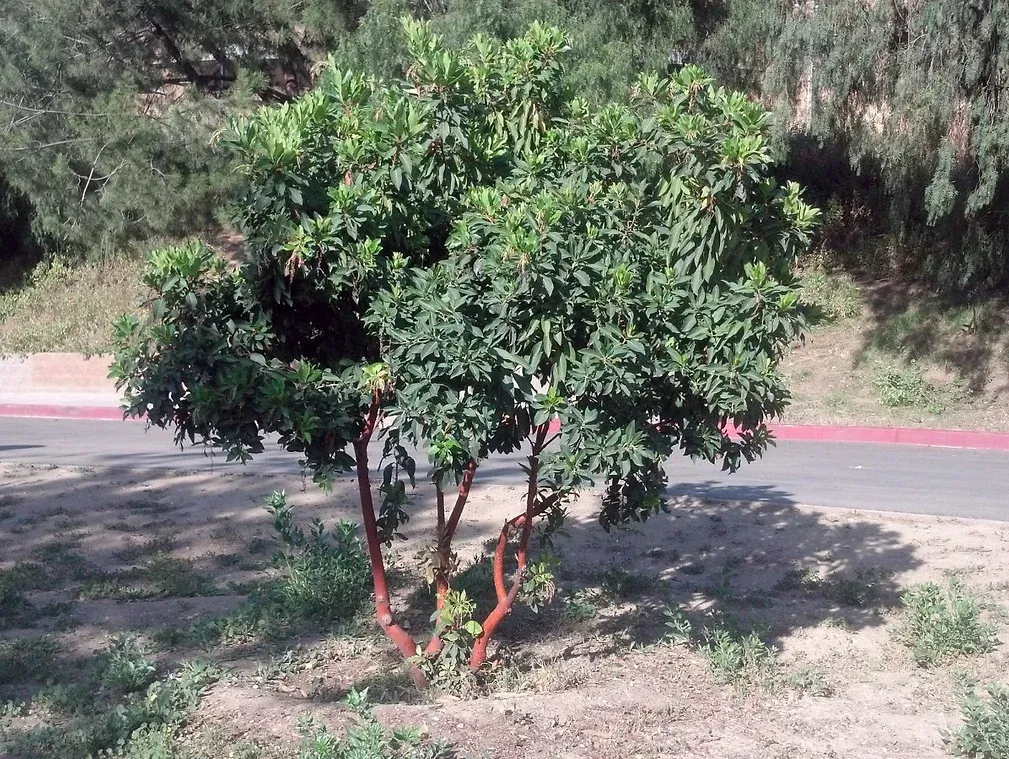
Artemisia californica (California Sagebrush)
Sagebrush is a distinctly fragrant shrub and is commonly found along trails in California - the smell if this plant will bring back memories of hiking in the Santa Monica Mountains.
This is a great plant for dry slopes and works well as an alternative to the non-native Rosemary.
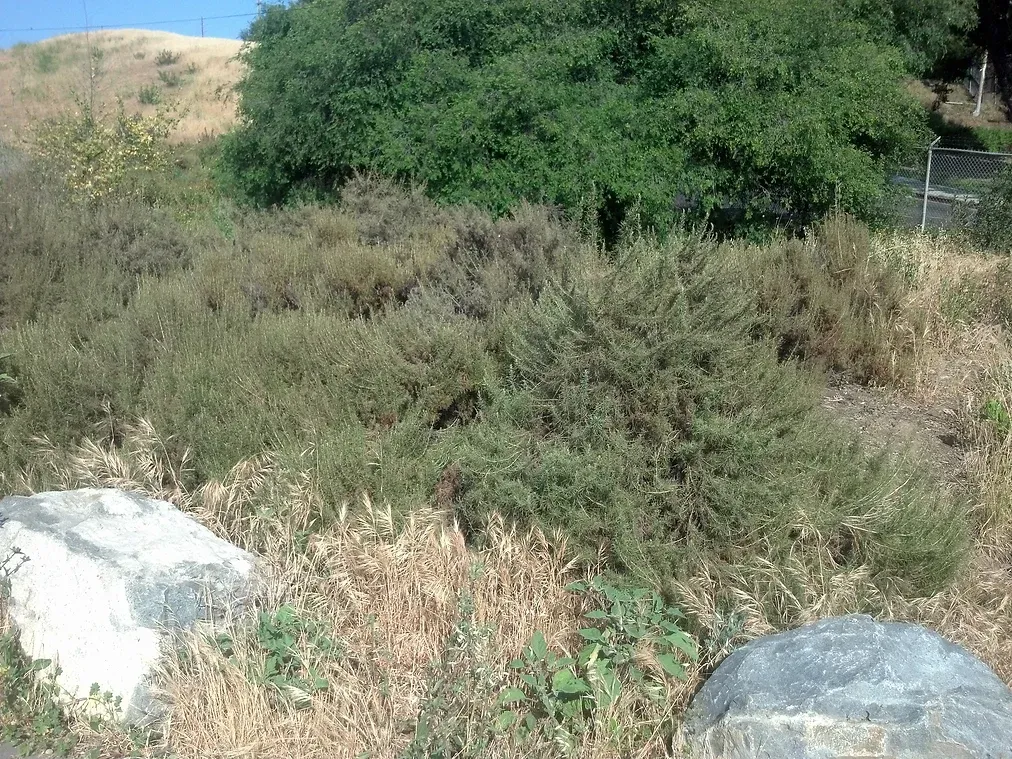
Baccharis pilularis (Coyote Brush)
Coyote Brush comes in a number of forms. It has varieties that grow as groundcover, small or as a tall shrub. Coyote brush is a useful plant as a natural hedge or for slope stabilization.
This plant is a nectar source for butterflies and other wildlife and is very fire-resistant.
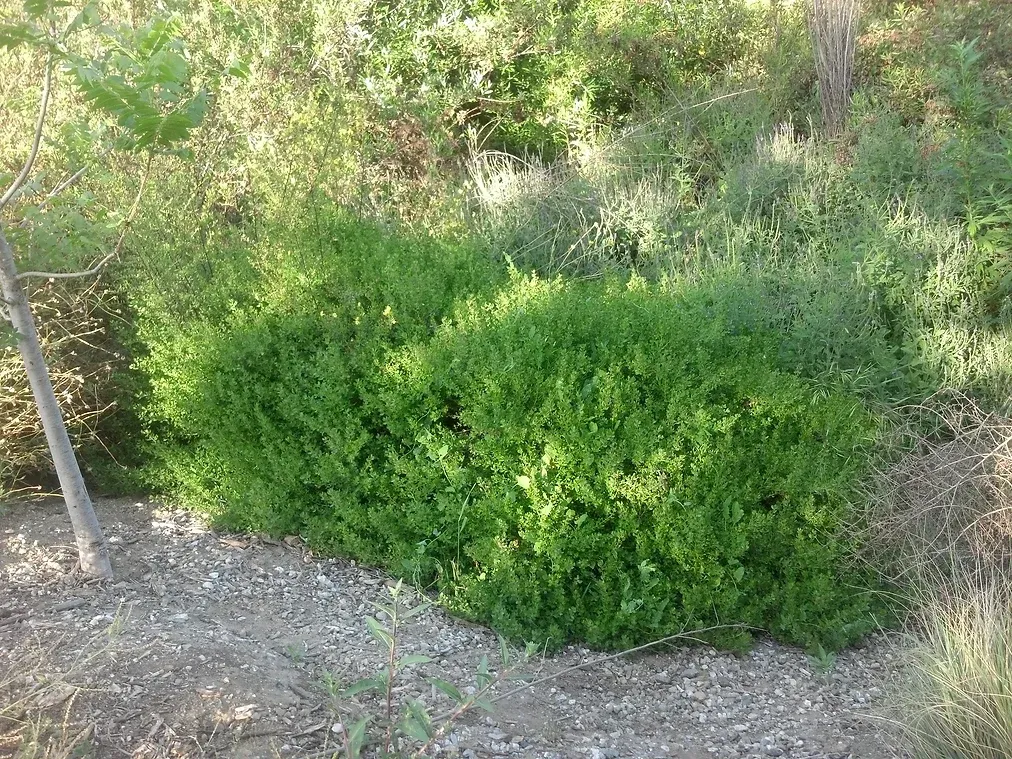
Chilopsis linearis (Desert Willow)
Desert Willow is a small deciduous tree with narrow willow-like leaves. Native to desert washes, this tree looks best with a little summer water and is better suited to inland locations
This tree blooms from Spring to Summer with white or pink trumpet flowers, which are very attractive to Hummingbirds.
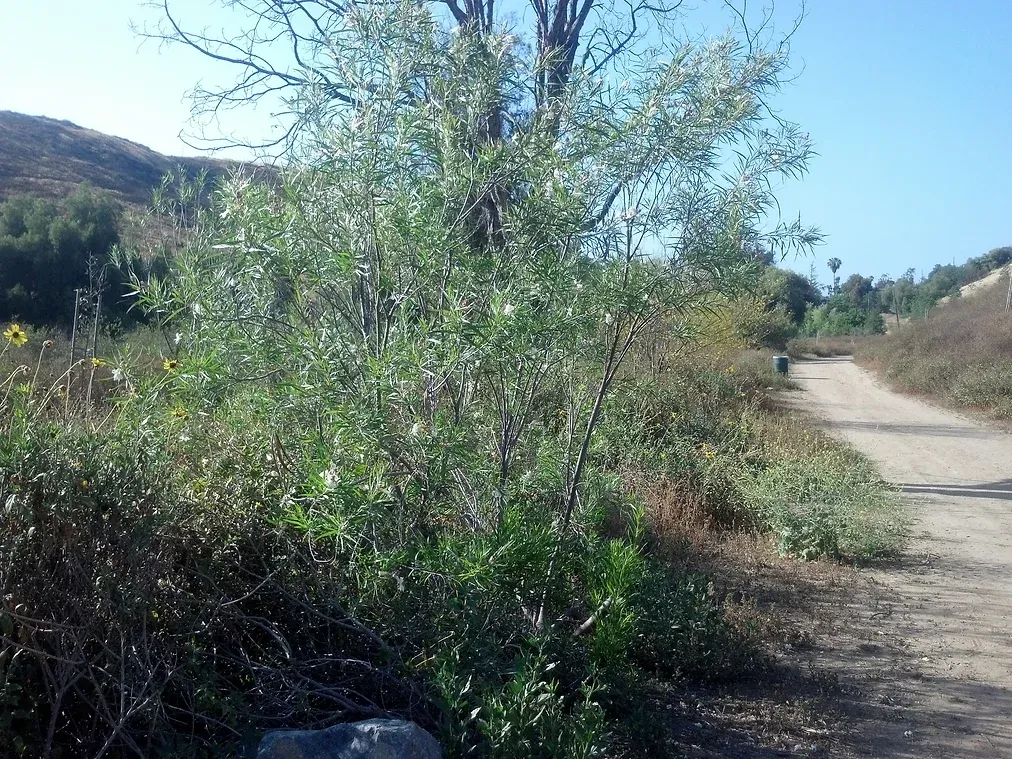
Croton setigerus (Doveweed)
Croton is not a common plant for home gardens, but you have to admire it's silvery foliage and naturally mounding form.
In Summer and lasting into Fall this annual plant starts to appear along the hillside trails in Ascot Hills, bringing a pop of color to an otherwise brown and dusty environment.
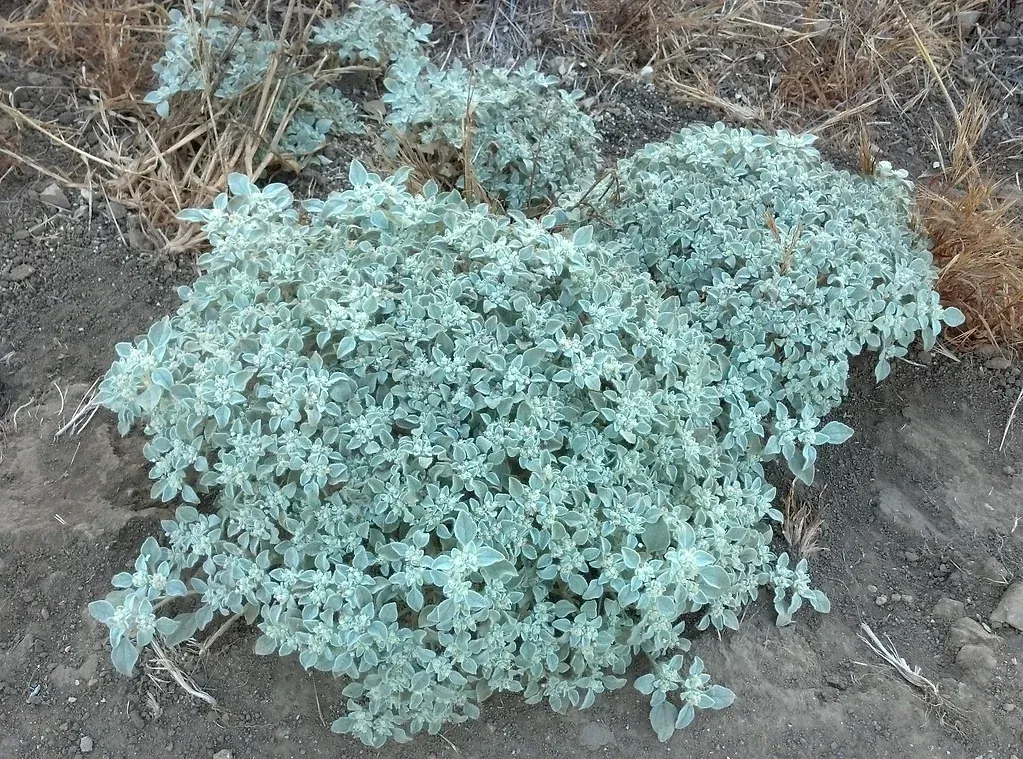
Datura wrightii (Sacred Datura)
Sacred Datura is an annual plant that grows fairly large (up to 5ft wide). Huge white trumpet flowers bloom on this plant from Spring through Summer.
Used in shamanic rituals by native Americans (hence the name), caution should be taken handling this plant as it can be very toxic.
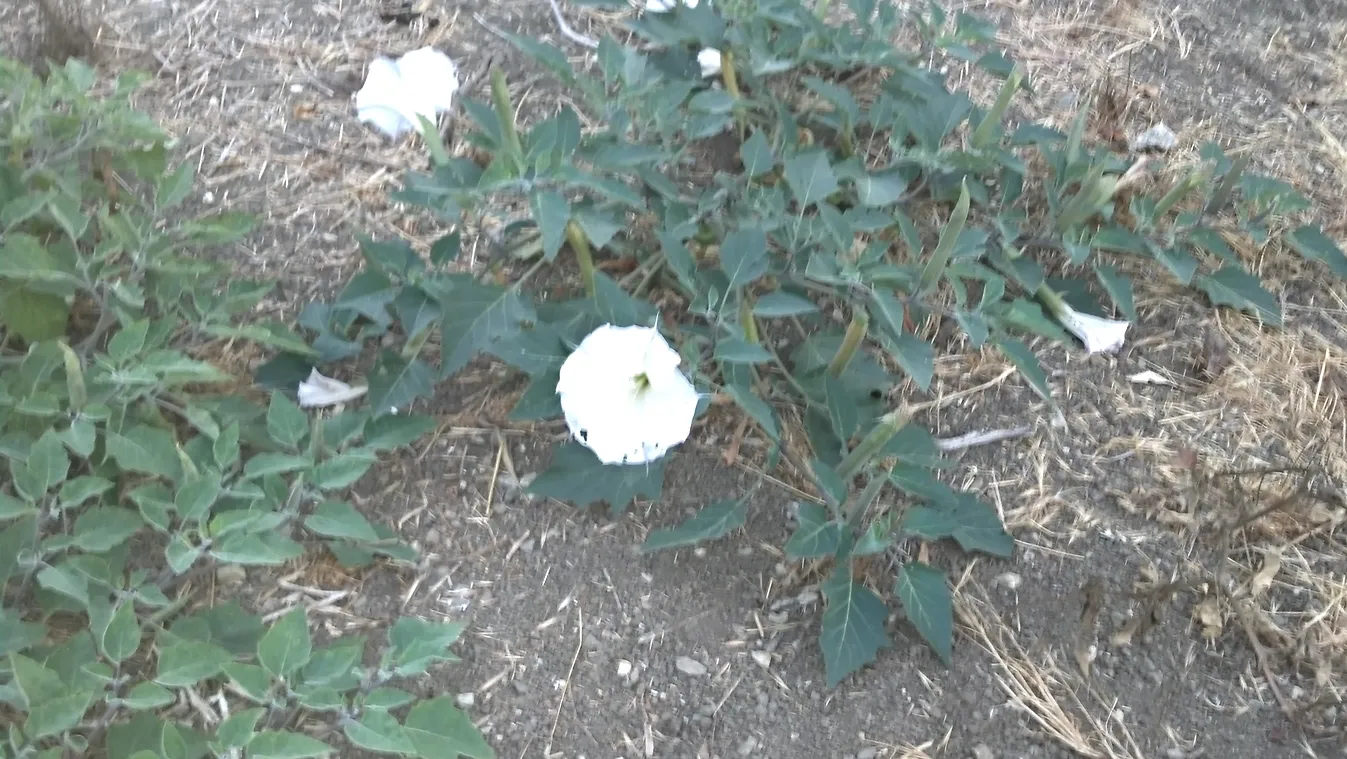
Diplacus aurantiacus (Sticky Monkeyflower)
This Monkeyflower is mixed in with a Buckwheat on the southeast end of the upper parking lot; you'll need to look carefully to find the plant with the orange flowers.
An attractive flowering shrub that is useful in shady spots. The leaves are sticky to the touch.
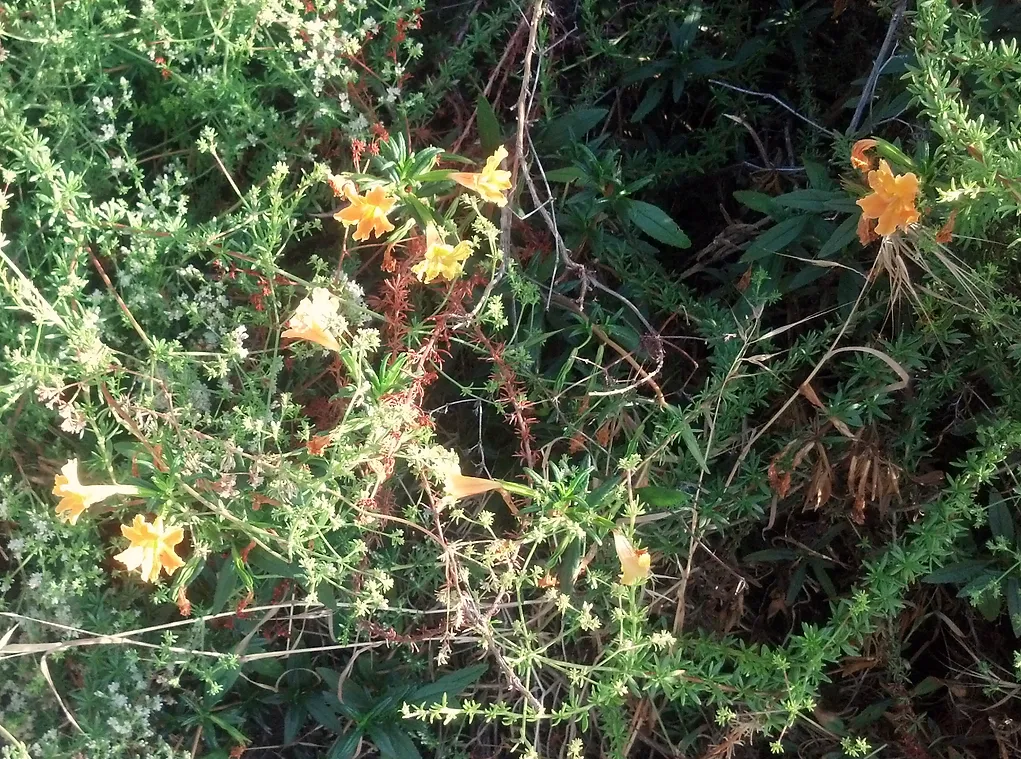
Eriogonum Fasciculatum (California Buckwheat)
California Buckwheat blooms with white flowers in Spring that turn pink in Summer and Chocolate in the Fall. These flowers attract many butterflies.
Generally seen as a medium sized shrub, there are groundcover varieties that can be used to trail over a wall as an alternative to trailing Rosemary.
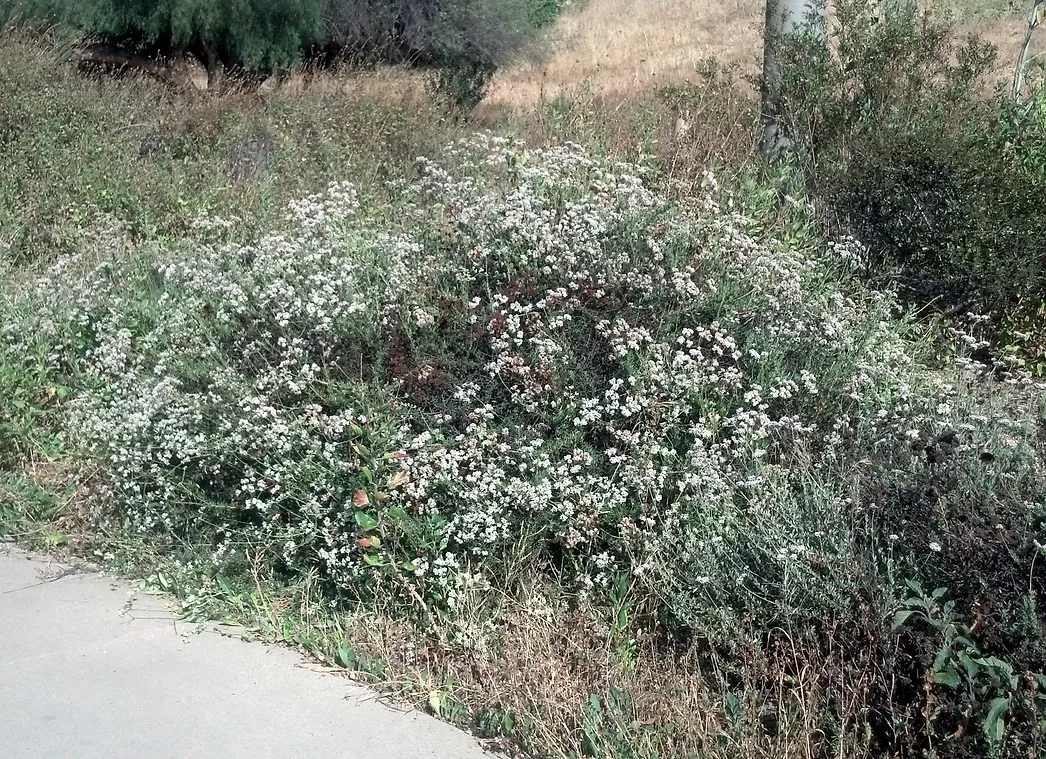
Eriophyllum confertiflorum (Golden Yarrow)
Golden Yarrow is a small perennial with silvery foliage and bright yellow flowers in Spring. Another good plant for a native butterfly garden.
Very tolerant of hot and dry conditions, this plant is found growing in pockets along the edge of the sun-drenched and dusty main trail.
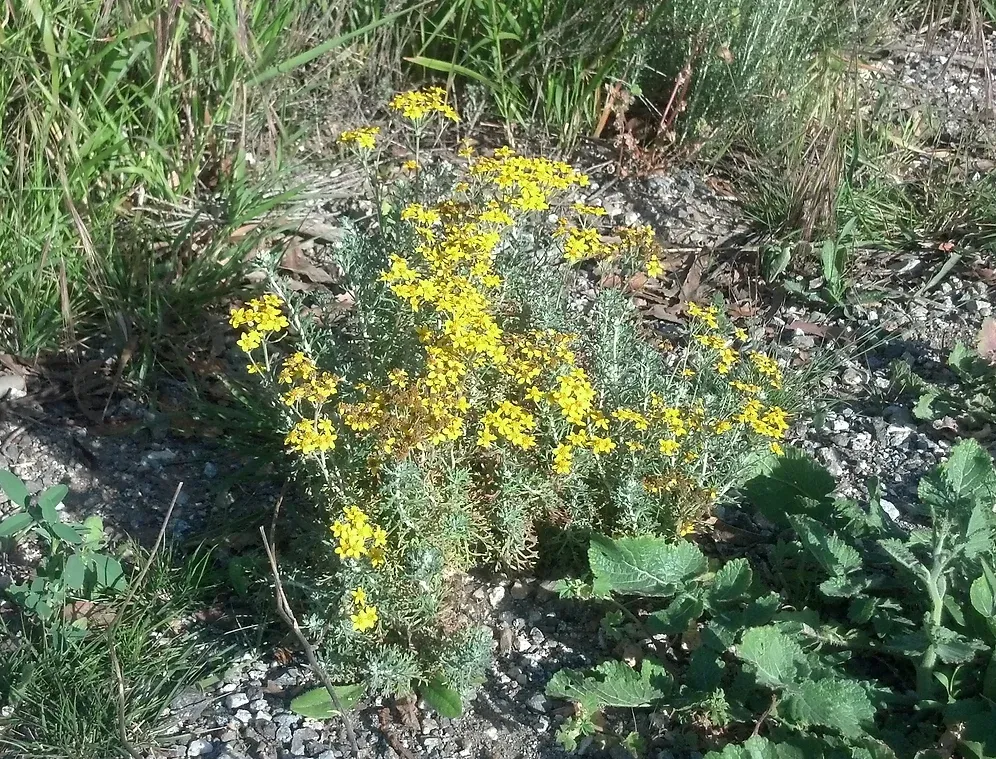
Heteromeles arbutifolia (Toyon)
This is the plant that Hollywood was named after. Early settlers found Toyon all over the hills overlooking Los Angeles and the shrub with its red berries reminded them of Holly from the old world and east coast.
Another old-fashioned name for this is Christmas Berry; families would gather branches of this with berries intact for display during the holiday season.
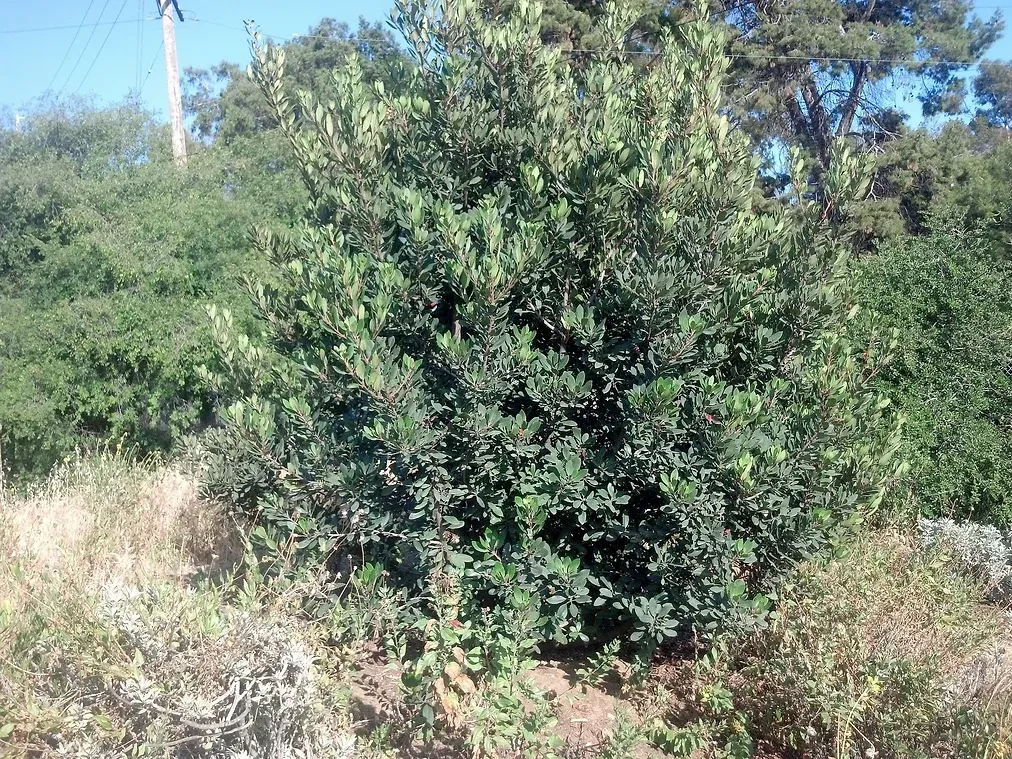
Juglans Californica (California Black Walnut)
This tree is fairly uncommon but is abundant in Ascot Hills. Park workers have made an effort to return this park back to a Black Walnut woodland as it was long before development started in the area over 100 years ago.
The walnuts are edible and were eaten by Native Americans so this is a good choice for an edible garden. Take caution - the juice of the walnuts inside their shell will stain your hands for days if you don't wear gloves to open them.
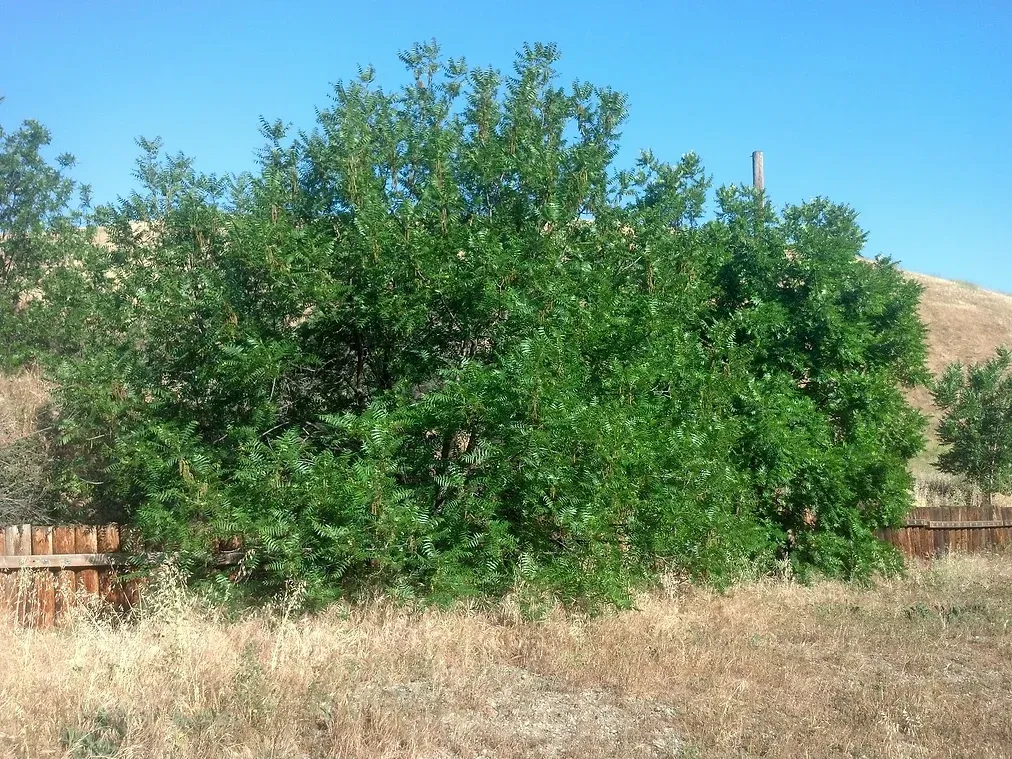
Rhamnus californica (Coffeeberry)
Coffeeberry is a pretty popular native shrub that has a few different cultivars to choose from. I believe this one near the Rain Garden is the "Eve's Case" variety. Regular coffeberry can be found throughout the park, including some large specimens up above the East Hill. Even though they can get big they can be pruned back to use as a natural hedge with attractive red berries in Fall. This plant is a magnet for wildlife.
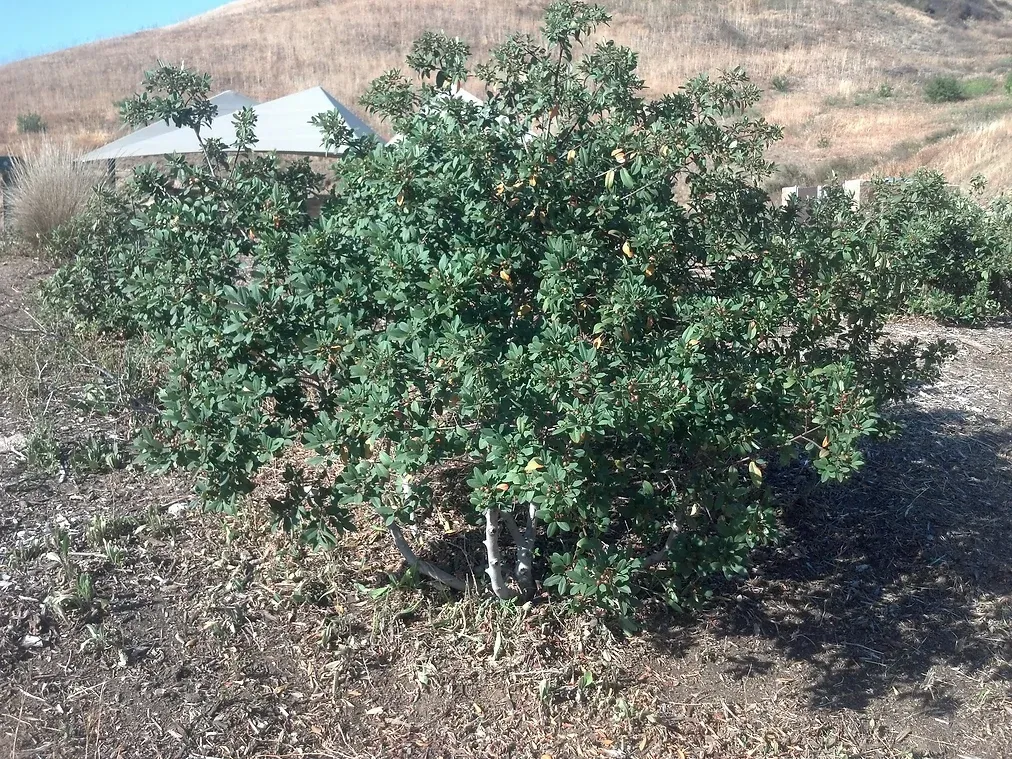
Muhlenbergia rigens (Deer grass)
If you like the look of Pampas grass but want something smaller and less invasive, Deer grass is perfect. 2ft high flower plumes stand above the grassy 3ft high mound.
Deer grass is great for adding texture to gardens and can be used to help prevent erosion.
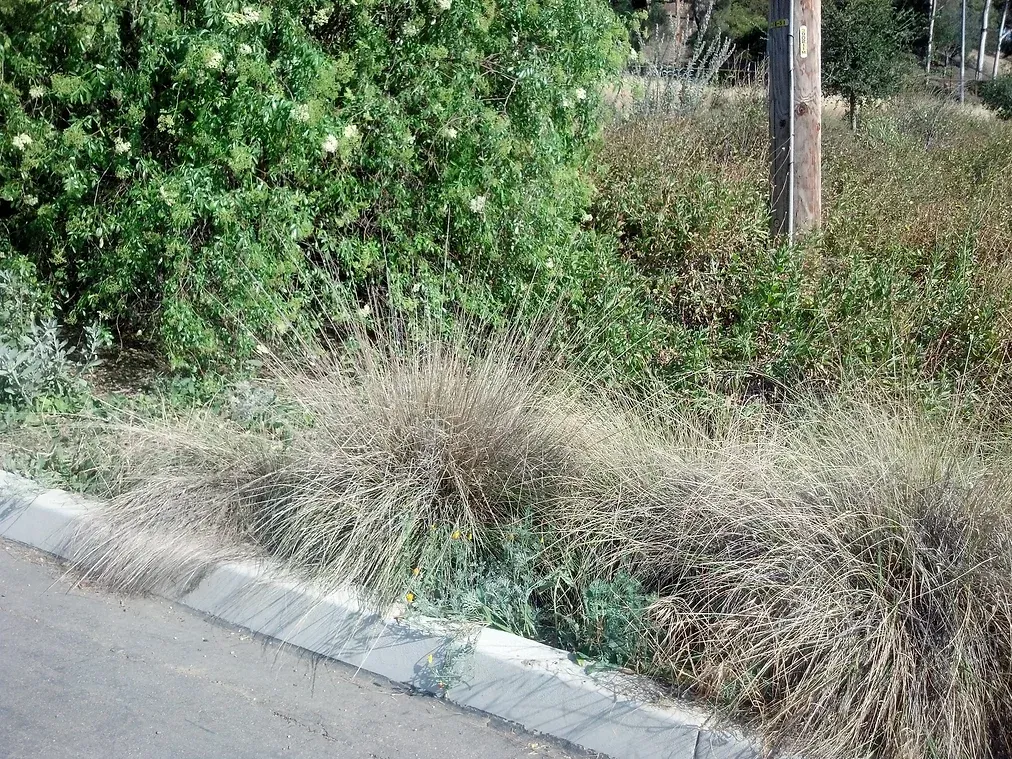
Parkinsonia floridia (Blue Palo Verde)
Blue Palo Verde is native to the low desert of California but can be grown in the inland valleys of Los Angeles (not good by the coast).
This deciduous tree has spectacular yellow blooms in Spring and attractive Blue-green bark which gives some color when the leaves have fallen. This is a great tree for a small front yard.
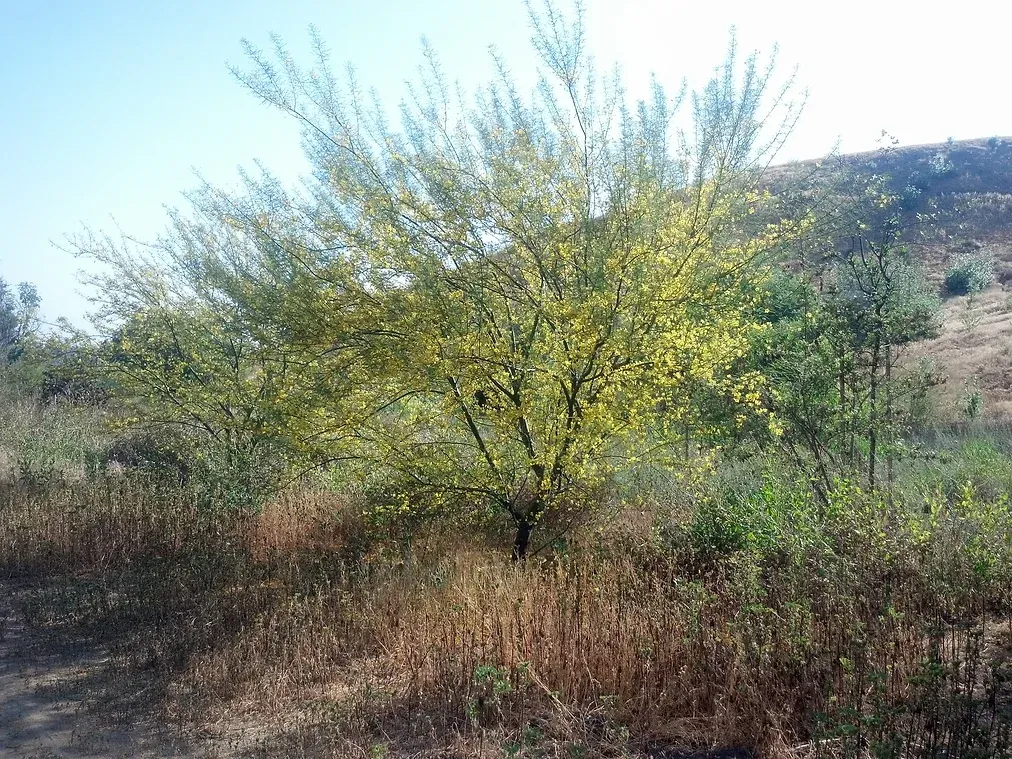
Platanus racemosa (California Sycamore)
California Sycamore is another iconic tree to the SoCal landscape - this tree is found in many parks, sidewalks and college campuses. Grows very tall - all specimens in the park are young.
Riparian by nature, this tree does best close to a source of water so is good next to a lawn. Provides shade in summer and sheds its leaves to provide sun in the winter.
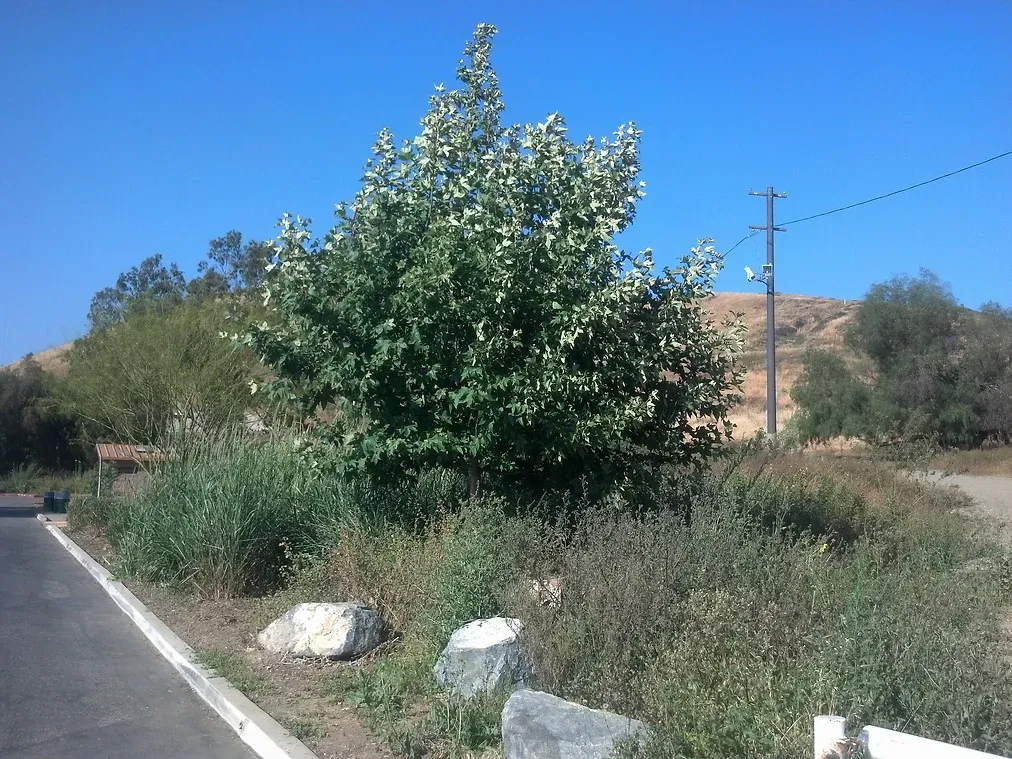
Populus fremontii (Fremont Cottonwood)
Next time you hear someone complain that we have no fall color in LA, show them this tree - the leaves yellow and look like an Aspen tree before falling to the ground.
Cottonwoods make great shade trees if you want something that sheds its leaves and allows sunlight to filter through in winter. Grows in similar conditions to Platanus racemosa. In rural California, these trees are commonly found on the south side of lawns, where they provide shade form the hot sun during the long California summers.
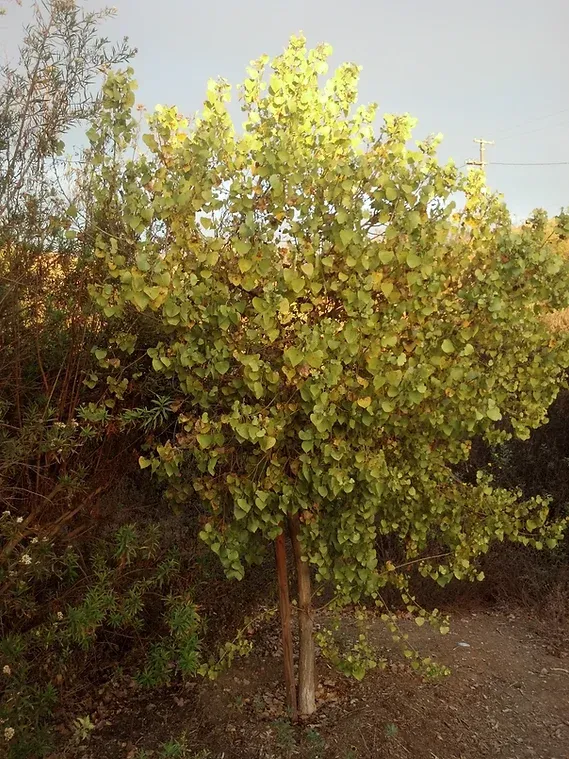
Rosa californica (CA Wild Rose)
The wild rose of California has pink flowers and blooms all summer long. Drought tolerant creeping shrub, but it prefers some extra water in inland gardens.
California wild rose is generally considered to be one of the easiest native plants to grow in a home garden.
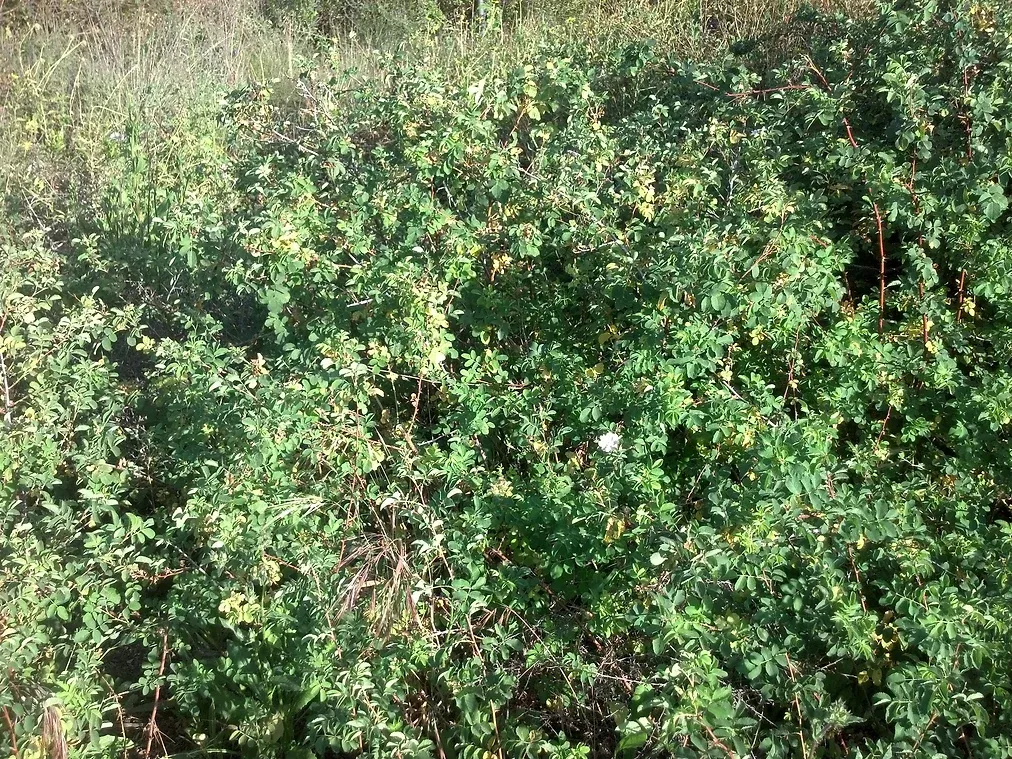
Salix lasiolepis (Arroyo Willow)
Another riparian tree (the stream in the middle of the park supports a lot of plant-life here, despite it's meager flow).
This willow can be trained to grow as a shrub (there are many shrub forms along the main trail) or tree and is another native that shows Fall Color.
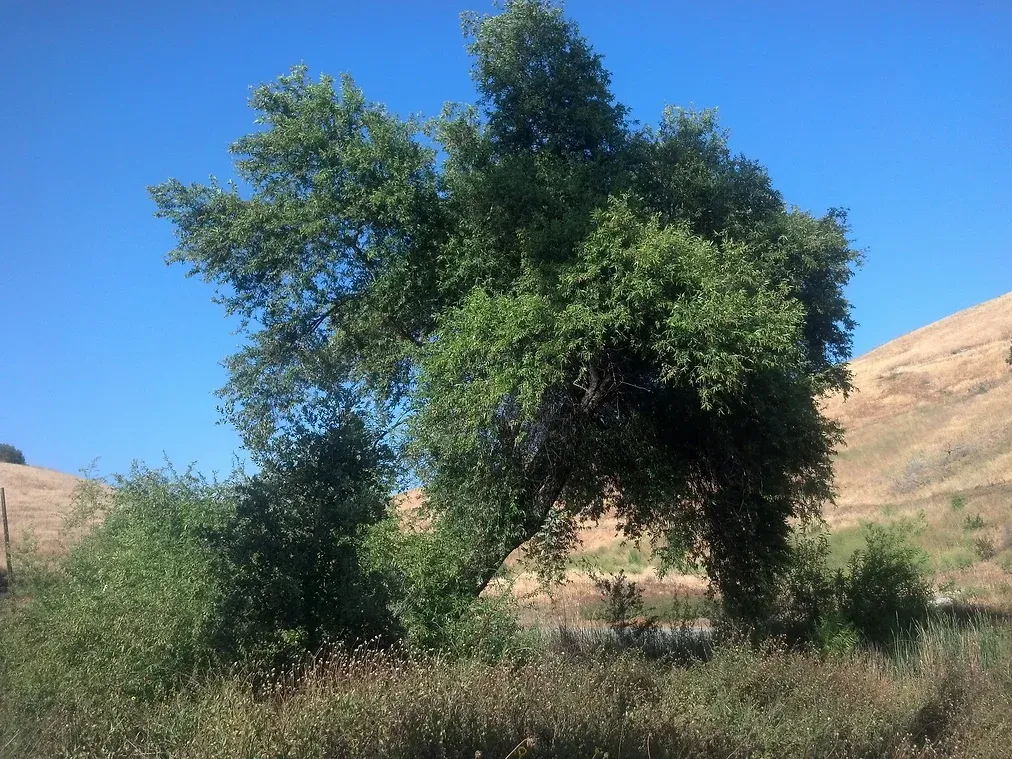
Carpenteria californica (Bush Anenome)
Bush Anenome is a great plant for shady areas with lush foliage and white flowers. There is small group of these hidden behind some xxx along the main trail where they are sheltered from the blazing afternoon sun.
This shrub has been widely used since discovery and is common in English gardens - good for a cottage style garden aesthetic. Excellent for cottagecore scenes.
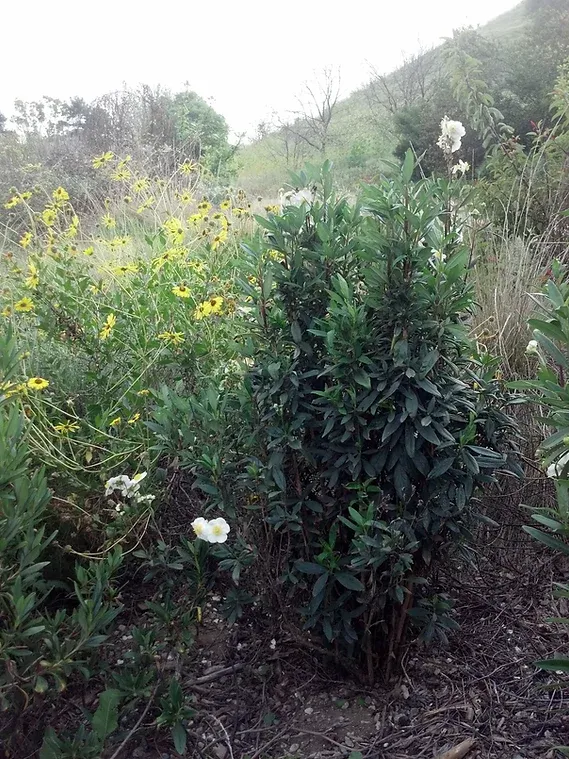
Ceanothus "Julia Phelps" (Small Leaf CA Lilac)
This species of Ceanothus has much very small dark green leaves and very showy purple blossom in spring. Looks really good in mixing plantings as shown in the picture below.
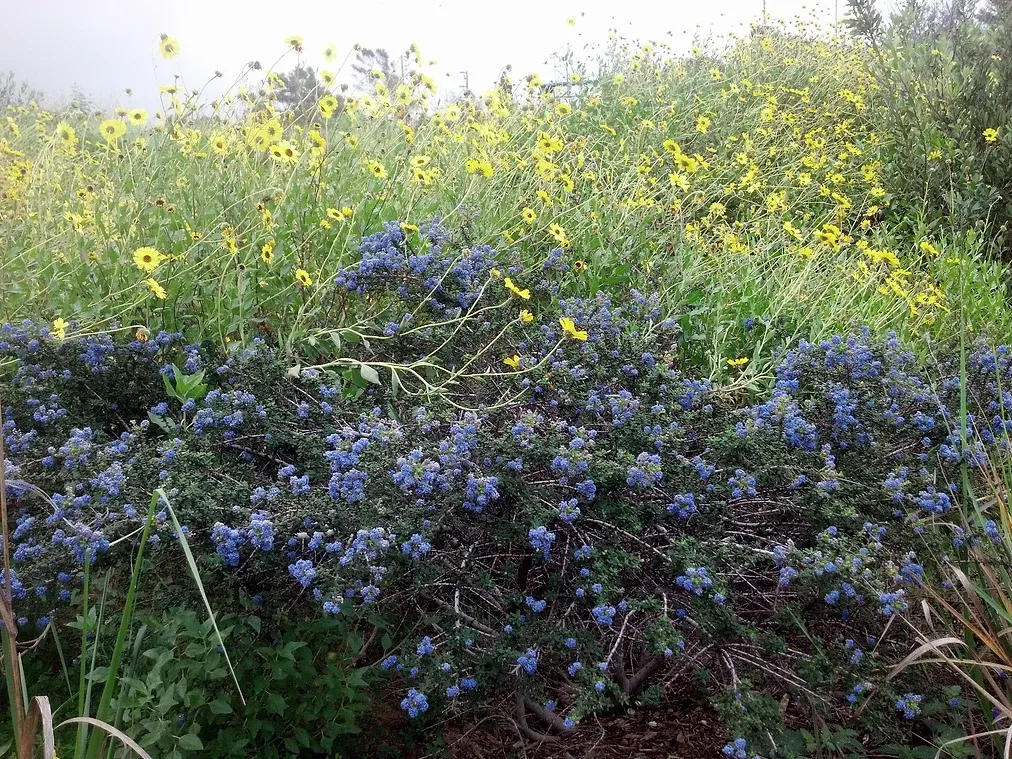
Encelia californica (Coast Sunflower)
Ascot Hills is awash in yellow and green in Spring when this sunflower shrub puts on its' show. A useful plant for covering large areas.
Coast Sunflower is the plant with the yellow flowers in the same picture of the Ceanothus "Julia Phelps".

Sambucus mexicana (Mexican Elderberry)
This deciduous tree that can be grown as a shrub has butter yellow flowers in April-August, followed by purple berries in September-October. The berries can be used for making pies or wine.
Once established, this tree is tolerant of extreme drought.
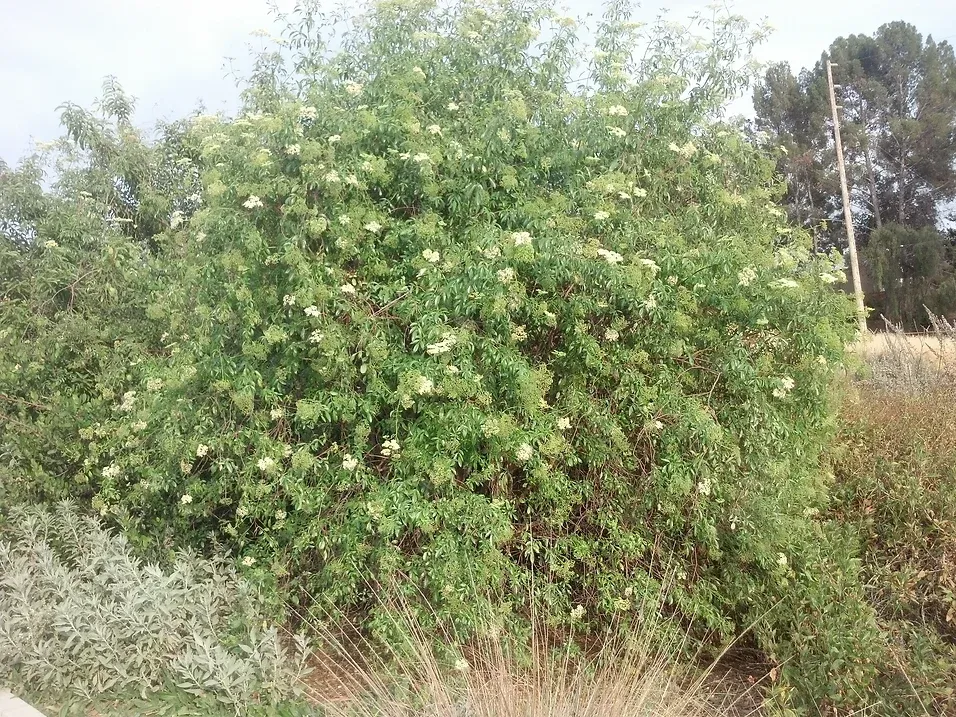
Romneya Coulteri (Matilija Poppy)
Also known as "Fried Egg Plant", this tall perennial has White flowers with large yellow centers that resemble that greasy breakfast staple.
Plant with caution in a residential garden as this plant will spread and produce many new plants, quickly taking over a small space.
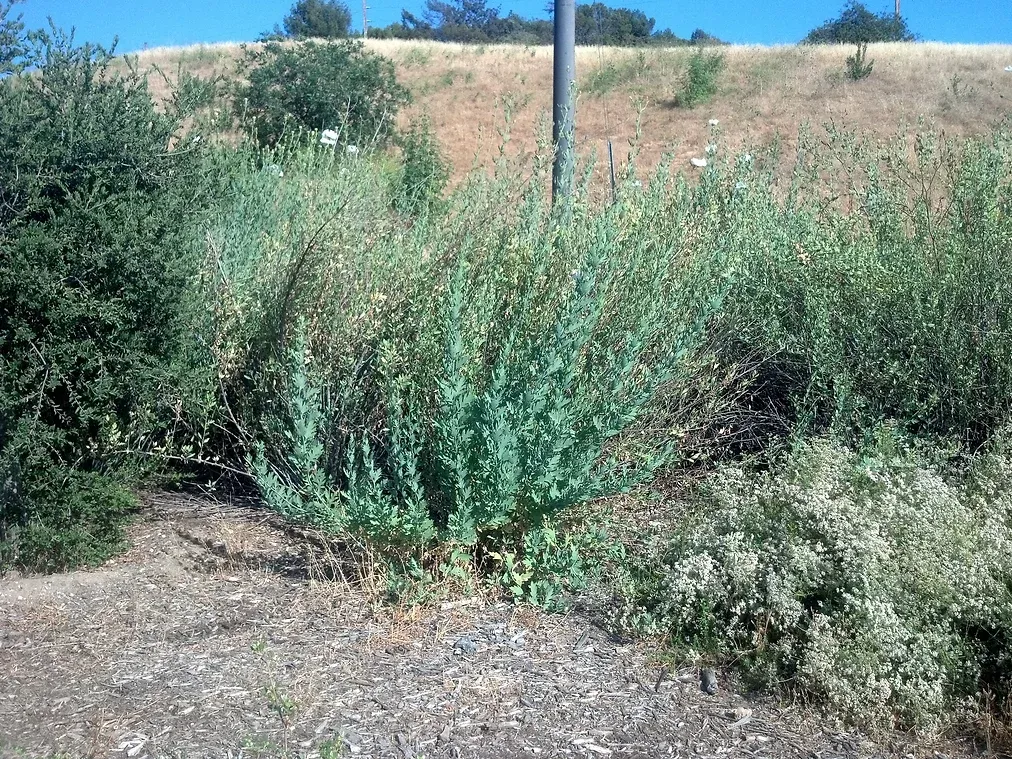
Salvia apiana (White Sage)
The White Sage plant is one of the larger Salvia species, with tall and arching flower stalks, up to six feet long. Striking white foliage and beautiful structural form make this a great plant for filling a large space, or as a central point in a planting composition.
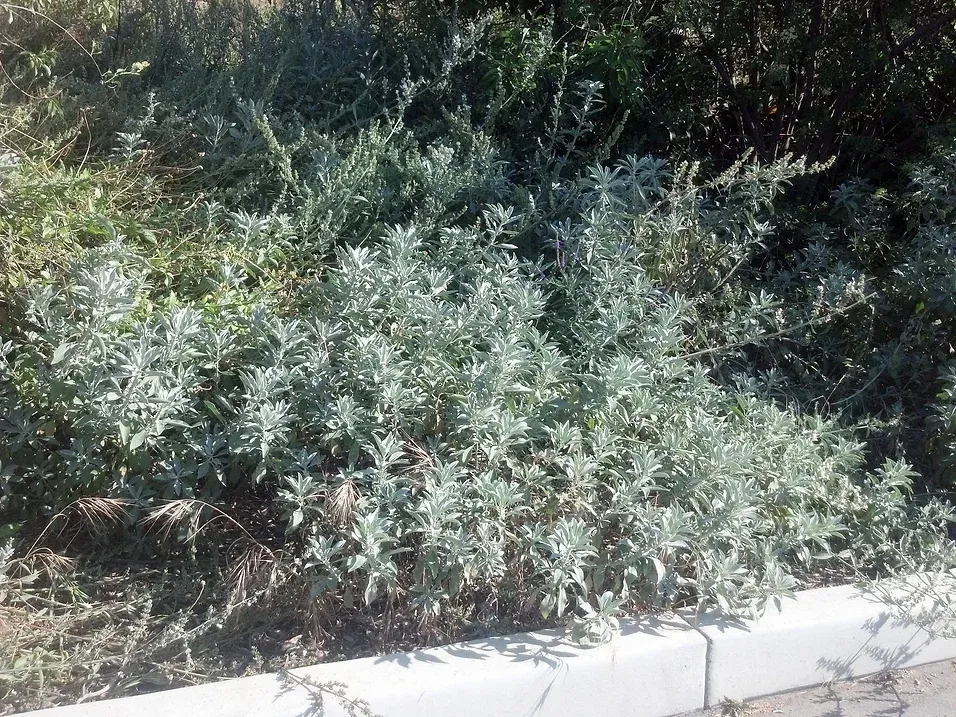
Verbena lasiostachys (Western Vervain)
This perennial is a great addition to a mixed bed of annual or small flowering perennials. Blue-purple flowers grow in clusters on long stems all Summer long. Like many Verbenas, they go dormant in Winter, and re-emerge from the ground in Spring.
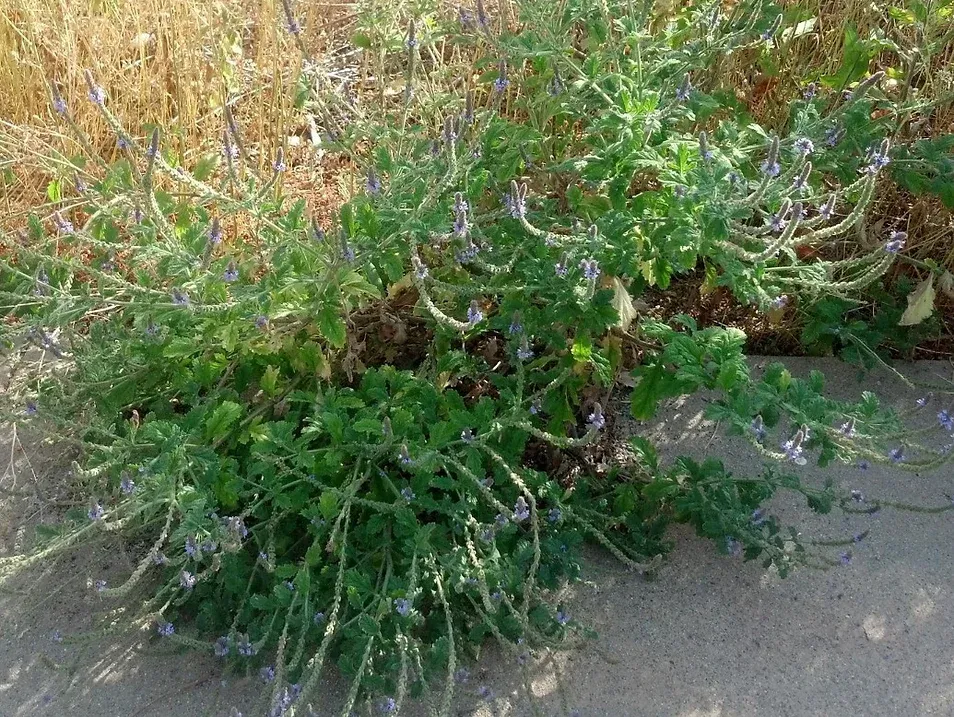
Yucca whippleii (Our Lord's Candle)
Also known as "Spanish Bayonet", this yucca has sharp leaves, so is best used away from foot traffic. Hikers in our sunny mountain areas will know this well. From a safe viewing distance this succulent is a great accent plant for a desert or zen garden with a stunning show of cream flowers every Spring/Summer, clustered on a large spike that can rise up to 15ft above the main body.
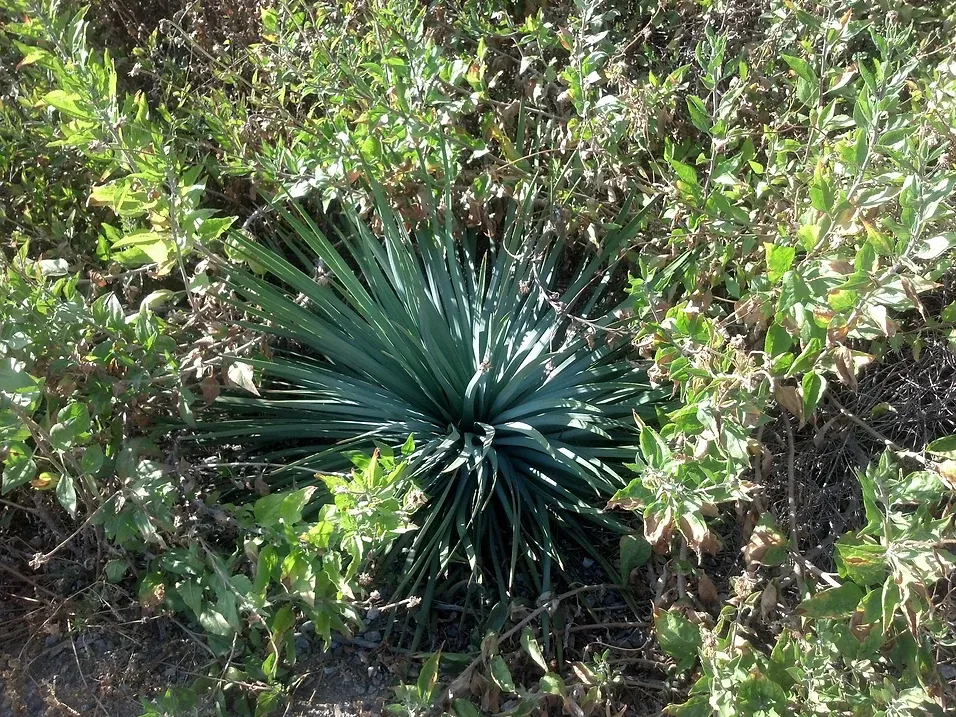
Ascot Hills is located in the Hillside Village neighborhood of Los Angeles.





